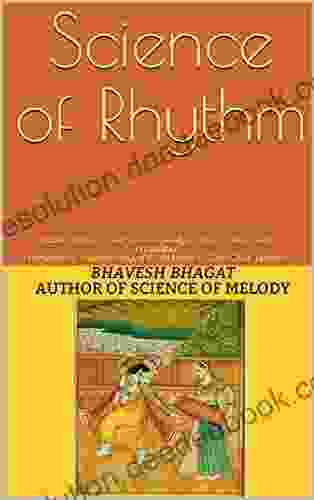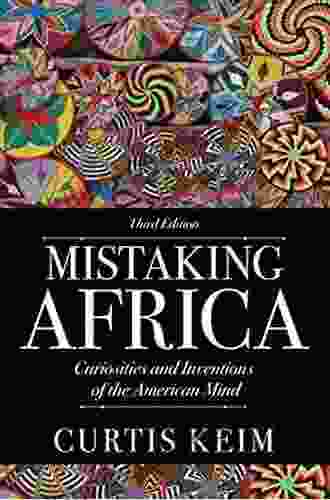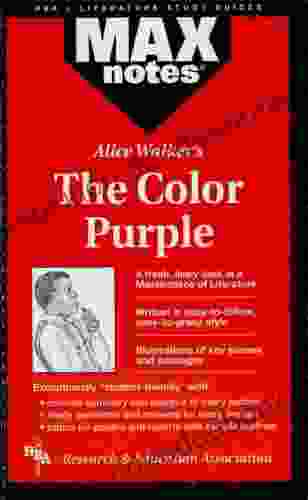Indian Rhythm Taal Shastra: An Analysis of Its Science and Sensibilities

Indian rhythm, known as Taal Shastra, is a complex and fascinating art form that has captivated musicians and music enthusiasts for centuries. Its intricate patterns, mathematical foundations, and profound aesthetic sensibilities create a vibrant and dynamic tapestry of sound. This article aims to provide a comprehensive overview of Taal Shastra, exploring its rich history, scientific principles, and cultural significance.
Historical Origins
5 out of 5
| Language | : | English |
| File size | : | 20888 KB |
| Text-to-Speech | : | Enabled |
| Screen Reader | : | Supported |
| Enhanced typesetting | : | Enabled |
| Word Wise | : | Enabled |
| Print length | : | 161 pages |
| Lending | : | Enabled |
The roots of Taal Shastra can be traced back to ancient Indian musical treatises such as the Natyashastra and the Sangita Ratnakara. These texts describe the rhythmic structures used in classical Indian music and dance, which were originally developed for devotional purposes. Over time, Taal Shastra evolved and became a sophisticated system of rhythmic analysis and notation.
Scientific Foundations
At the heart of Taal Shastra lies a mathematical framework that governs the construction and performance of rhythmic patterns. Each taal is defined by a specific number of beats, known as matras, which are arranged in a hierarchical structure. This structure is based on the concept of tal, which refers to the basic rhythmic unit or cycle.
Taals are further characterized by their division into vibhagas, or sections, which are marked by strong beats known as sam. These sections create a sense of rhythmic momentum and contribute to the overall aesthetic of the taal.
Rhythmic Patterns
The rhythmic patterns created within Taal Shastra are incredibly diverse and complex. They range from simple two-beat patterns to intricate polyrhythmic structures involving multiple cycles simultaneously. Each taal has its own unique set of rhythmic variations, known as bols, which are played using a variety of percussion instruments such as the tabla, mridangam, and ghatam.
Mathematical Notations
Taal Shastra has developed a sophisticated system of notations that allows musicians to precisely record and share rhythmic patterns. These notations, known as talas, are written using a combination of numbers and symbols to represent the matras, vibhagas, and bols of a particular taal. The ability to accurately notate rhythms has greatly contributed to the preservation and transmission of this ancient art form.
Aesthetic Sensibilities
Beyond its mathematical underpinnings, Taal Shastra is also deeply rooted in aesthetic principles. Indian musicians have developed a refined sense of rhythm that emphasizes precision, balance, and expressiveness. The interplay between different rhythmic patterns creates a sense of tension and release, which is considered essential to the aesthetic experience of Indian music.
Cultural Significance
Taal Shastra is an integral part of Indian culture and finds expression in a wide range of musical genres, including classical, folk, and popular music. It is also closely intertwined with Indian dance forms such as Bharatanatyam, Kathak, and Odissi, where the intricate rhythms provide a framework for the dancer's movements.
Modern Applications
In recent years, Taal Shastra has begun to gain increasing attention in Western musical circles. Musicians from a variety of genres have been exploring the rhythmic possibilities offered by Indian rhythmic systems, incorporating them into their own compositions and performances. This cross-cultural exchange has led to a renewed appreciation for the richness and sophistication of Taal Shastra.
Indian rhythm, as embodied in Taal Shastra, is a multifaceted art form that combines scientific principles, aesthetic sensibilities, and cultural heritage. Its intricate patterns and mathematical foundations create a vibrant and dynamic tapestry of sound that continues to inspire musicians and music enthusiasts around the world. By delving into the depths of Taal Shastra, we gain a deeper understanding of the rich musical traditions of India and the universal power of rhythm to captivate the human soul.
References
- Natyashastra (Translated by Manomohan Ghosh)
- Sangita Ratnakara (Translated by R.K. Shringy)
- Rhythm in Indian Music: Theory and Practice by George Ruckert
- The Indian Rhythm System: A Practical Approach by Peter Manuel
****
5 out of 5
| Language | : | English |
| File size | : | 20888 KB |
| Text-to-Speech | : | Enabled |
| Screen Reader | : | Supported |
| Enhanced typesetting | : | Enabled |
| Word Wise | : | Enabled |
| Print length | : | 161 pages |
| Lending | : | Enabled |
Do you want to contribute by writing guest posts on this blog?
Please contact us and send us a resume of previous articles that you have written.
 Page
Page Chapter
Chapter Text
Text Genre
Genre Library
Library E-book
E-book Magazine
Magazine Glossary
Glossary Bibliography
Bibliography Foreword
Foreword Manuscript
Manuscript Scroll
Scroll Codex
Codex Bestseller
Bestseller Classics
Classics Library card
Library card Biography
Biography Reference
Reference Encyclopedia
Encyclopedia Character
Character Resolution
Resolution Librarian
Librarian Catalog
Catalog Borrowing
Borrowing Periodicals
Periodicals Study
Study Scholarly
Scholarly Lending
Lending Reserve
Reserve Rare Books
Rare Books Special Collections
Special Collections Interlibrary
Interlibrary Literacy
Literacy Study Group
Study Group Thesis
Thesis Storytelling
Storytelling Awards
Awards Reading List
Reading List Book Club
Book Club Theory
Theory Daishin Morgan
Daishin Morgan Albert Low
Albert Low Ellen Anthony
Ellen Anthony J E Runnion
J E Runnion Kinder Sule Books
Kinder Sule Books Gavin Newsom
Gavin Newsom Jay Dawani
Jay Dawani Martin Edwards
Martin Edwards Michael Smith
Michael Smith Robin Melanson
Robin Melanson Elena Aitken
Elena Aitken James Livingood
James Livingood E Dixon
E Dixon Andrew Luria
Andrew Luria Scott Rush
Scott Rush Juliette Sobanet
Juliette Sobanet Wendelin Van Draanen
Wendelin Van Draanen Dante King
Dante King Matthew C Le Merle
Matthew C Le Merle Andrew Mcafee
Andrew Mcafee
Light bulbAdvertise smarter! Our strategic ad space ensures maximum exposure. Reserve your spot today!

 Robert FrostCello Position Handbook Volume 1 by Burton Fisher: A Comprehensive Guide for...
Robert FrostCello Position Handbook Volume 1 by Burton Fisher: A Comprehensive Guide for...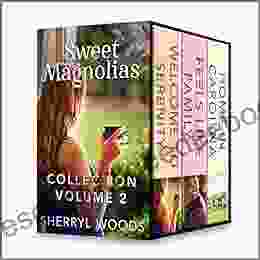
 Enrique BlairThe Sweet Magnolias Collection: Escape into a Tapestry of Love, Friendship,...
Enrique BlairThe Sweet Magnolias Collection: Escape into a Tapestry of Love, Friendship,... Edgar CoxFollow ·5.5k
Edgar CoxFollow ·5.5k Blake KennedyFollow ·3.4k
Blake KennedyFollow ·3.4k William PowellFollow ·8.5k
William PowellFollow ·8.5k Roberto BolañoFollow ·11.7k
Roberto BolañoFollow ·11.7k Ivan TurgenevFollow ·5.2k
Ivan TurgenevFollow ·5.2k Dan BellFollow ·4.4k
Dan BellFollow ·4.4k Darren NelsonFollow ·5.1k
Darren NelsonFollow ·5.1k Lucas ReedFollow ·8.8k
Lucas ReedFollow ·8.8k
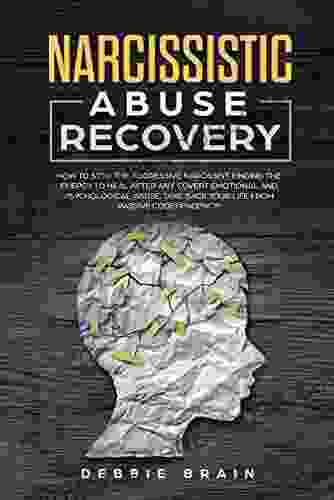
 Billy Foster
Billy FosterHow to Stop the Aggressive Narcissist: Finding the Energy...
Understanding...

 Cortez Reed
Cortez ReedThe Butcher of Hooper Creek: The Notorious Life of...
In the rugged and unforgiving Canadian...

 Charles Reed
Charles ReedThe Portable Sales Coach: Your Comprehensive Guide to...
Discover the Sales Mastery...

 Jack Butler
Jack ButlerMeet Nancy Clancy, the Feisty and Fabulous Disney Junior...
In a vibrant world where...

 Francis Turner
Francis TurnerChaos Response: The Letter Harmony And Chaos
In the beginning, there was...
5 out of 5
| Language | : | English |
| File size | : | 20888 KB |
| Text-to-Speech | : | Enabled |
| Screen Reader | : | Supported |
| Enhanced typesetting | : | Enabled |
| Word Wise | : | Enabled |
| Print length | : | 161 pages |
| Lending | : | Enabled |


